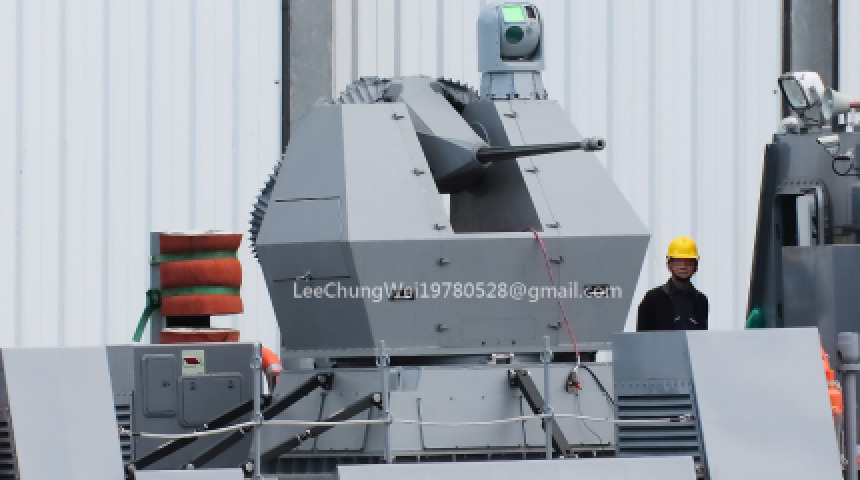美軍計劃利用人工智慧技術,提升未來「黃金圓頂」防禦系統的自主性

(Staff Sgt. Malcolm Cohens-Ashley/Army)
美國陸軍正積極尋求運用人工智慧(AI)技術,提升未來「黃金圓頂」(Golden Dome)防禦系統的自主性,旨在減少人力需求並提高作戰效率。陸軍飛彈與太空計畫執行官法蘭克·洛薩諾少將在阿拉巴馬州亨茨維爾舉行的美國陸軍協會全球力量研討會上表示,陸軍計劃將在關島防禦系統中開發的技術應用於「黃金圓頂」計畫。
關島防禦系統的技術應用
關島防禦系統的主要組成部分包括新型現代化雷達、新興的間接火力防護能力(IFPC),以及新的整合戰鬥指揮系統(IBCS)。洛薩諾指出,目標是整合更多AI驅動的火控系統,減少人力需求,並創建更多遠端操作和自主運作的系統。
降低人力需求的策略
目前,陸軍通常配置一個發射器及兩到三名士兵的操作團隊。在「黃金圓頂」計畫中,可能採用集裝箱式飛彈或將飛彈發射器埋入地下,這些系統需要較少的維護,人員可能每隔數週進行一次狀態檢查,並透過遠端測試。
人工智慧在軍事領域的應用趨勢
除了「黃金圓頂」計畫,人工智慧在美軍其他領域的應用也日益增加。例如,軟體公司Camgian最近獲得了一份價值5,500萬美元的合約,利用先進的殺傷鏈自動化技術增強陸軍現有的一體化防空和飛彈防禦系統,以應對無人機群的威脅。
此外,帕蘭泰爾技術公司(Palantir Technologies)正在向美國陸軍交付配備人工智慧的行動戰鬥站,這些系統能夠從多種感測器和系統收集數據,並進行處理,協助士兵更迅速、準確地打擊目標。
未來展望
為實現這些能力,陸軍計劃利用在關島防禦系統中獲得的經驗,並調整其整合火力測試計畫(IFTC),將重點轉向如何在2026年後將自主性和AI技術引入「黃金圓頂」系統。洛薩諾表示,2026年的IFTC將是關島防禦系統的關鍵測試,之後,若有需要支持「黃金圓頂」計畫,陸軍希望這些先進的AI和自主系統已準備就緒。
US Army Plans to Utilize Artificial Intelligence to Enhance Autonomy of Future ‘Golden Dome’ Defense System
The U.S. Army is actively seeking to employ artificial intelligence (AI) technology to enhance the autonomy of the future “Golden Dome” defense system, aiming to reduce manpower requirements and improve operational efficiency. Major General Frank Lozano, the Army’s program executive officer for missiles and space, stated at the Association of the U.S. Army’s Global Force Symposium in Huntsville, Alabama, that the Army plans to apply technologies developed for the Guam Defense System to the “Golden Dome” project.
Application of Guam Defense System Technologies
Key components of the Guam Defense System include new modernized radars, the emerging Indirect Fire Protection Capability (IFPC), and the new Integrated Battle Command System (IBCS). Lozano emphasized that the goal is to integrate more AI-driven fire control systems to reduce manpower needs and to create more remotely operated and autonomously functioning systems.
Strategies to Reduce Manpower Requirements
Currently, the Army typically deploys a launcher with a crew of two to three soldiers. In the “Golden Dome” project, containerized missiles or ground-embedded launchers may be used, requiring less maintenance, with personnel conducting status checks every few weeks and performing tests remotely.
Trends in AI Applications in the Military
Beyond the “Golden Dome” project, the application of AI in other areas of the U.S. military is also increasing. For example, software company Camgian recently secured a $55 million contract to enhance the Army’s existing Integrated Air and Missile Defense system with advanced kill-chain automation technology to counter drone swarm threats.
Additionally, Palantir Technologies is delivering AI-equipped mobile combat stations to the U.S. Army. These systems can collect and process data from various sensors and systems, assisting soldiers in targeting more quickly and accurately.
Future Outlook
To achieve these capabilities, the Army plans to utilize insights gained from the Guam Defense System and adjust its Integrated Fires Test Campaign (IFTC) to focus on incorporating autonomy and AI technologies into the “Golden Dome” system post-2026. Lozano mentioned that the 2026 IFTC will be a pivotal test for the Guam Defense System, and subsequently, if called upon to support the “Golden Dome” initiative, the Army aims to




回應文章建議規則: